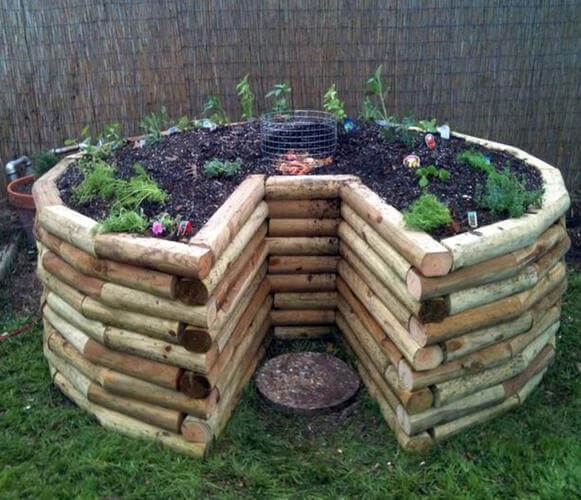What are Keyhole Gardens?
Keyhole gardens are a mix between square-foot gardening and herb spirals, blending the best of both practices to create something far more practical. In a word, the keyhole garden could be distilled down to ‘accessibility’.
It allows gardeners to access their garden bed from within a small radius located in the centre of the plot.
More...
Square-foot gardening has as its premise the ability to carve up garden plots into…well…square feet. This can be done on an individual square-foot size thereby forcing the gardener to navigate the perimeter of each bed. The alternative method is to mark beds into square-foot dimensions of the whole which means gardeners need to bend down to cultivate, tend or harvest their plots.
So, while square-foot gardening has come a long way in reducing the amount of effort required to tend our garden beds it falls short of keyhole gardens by a long shot.
A keyhole garden offers as its main advantages the ability to tend your beds from the one position. You literally work from within the bed and rotate to access every inch of it. Plus, the bed is raised so you don’t need to get on your knees when conducting your gardening tasks.
For people with physical disabilities, and the elderly, the keyhole garden is the ultimate way to enjoy this recreational hobby.
How to Build a Keyhole Garden

Source: Pinterest
Start by driving a stake into the ground as your pivot point. Then attach a piece of string to the stake with a marker measured out at 50cm(20”) and draw your inner circle. This is where you will stand while performing your gardening tasks.
Then, move the marker 1.5m (5’) away from the stake along the piece of string and draw another circle on the ground. This will become the outer perimeter of your garden bed and will allow you to reach all areas from your inner pivot position.
You will need to allow an access point of at least 50cm (20”) to get into the centre of the garden once it’s been built.
Once this has been done then it’s time to build the raised bed. You could use rocks, bricks, sleepers or any other material that can retain the soil within the beds. The height required will be at least 1m (3’ 3”) so it will need to be constructed well enough to hold all that soil.
Finally, once the bed has been built fill it with soil, compost and manures to create your gardening plot.
Why Build a Keyhole Garden
The ultimate answer, apart from the accessibility features mentioned earlier, is the efficient use of space. Consider creating a square, raised garden bed that you could access from every angle. It could only be 1m x 1m (3.3ft x 3.3ft) but would take up a space measuring 2m x 2m for access. Therefore, this one garden bed would require 4sq. m but only provide 1sq. m of gardening plot. The arable portion of this plot is only 25%.
A keyhole garden, on the other hand – with the measurements quoted earlier, would take up an area totaling 9 sq.ms and provide a plot size of 5.78 sq.ms. The arable portion of this plot is a whopping 64%.
Even if you were to try and maximise the space used for the square garden beds the best percentage of arable land that you would get would still only be 36%, almost half that of the keyhole garden.
So, it makes complete sense to build these rather than waste valuable space constructing their square counterparts.
Published on June 5, 2023 by AGT
Last Updated on October 23, 2023




